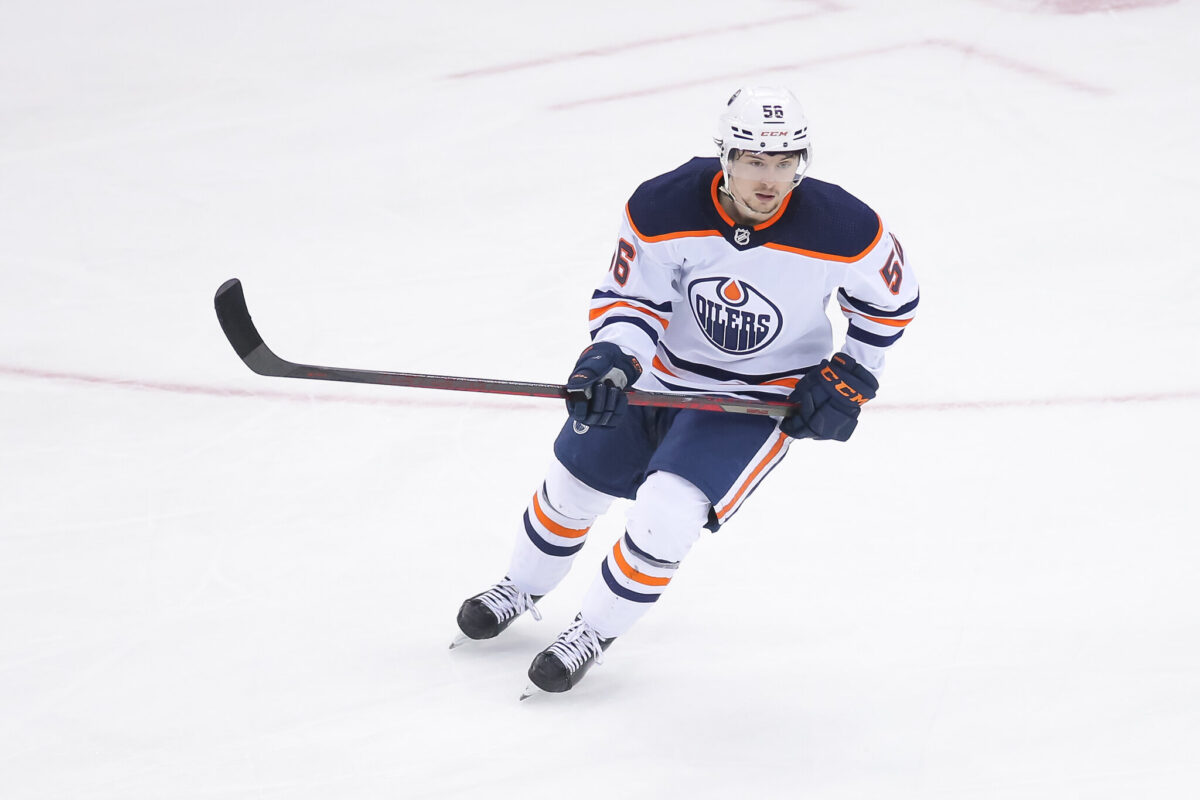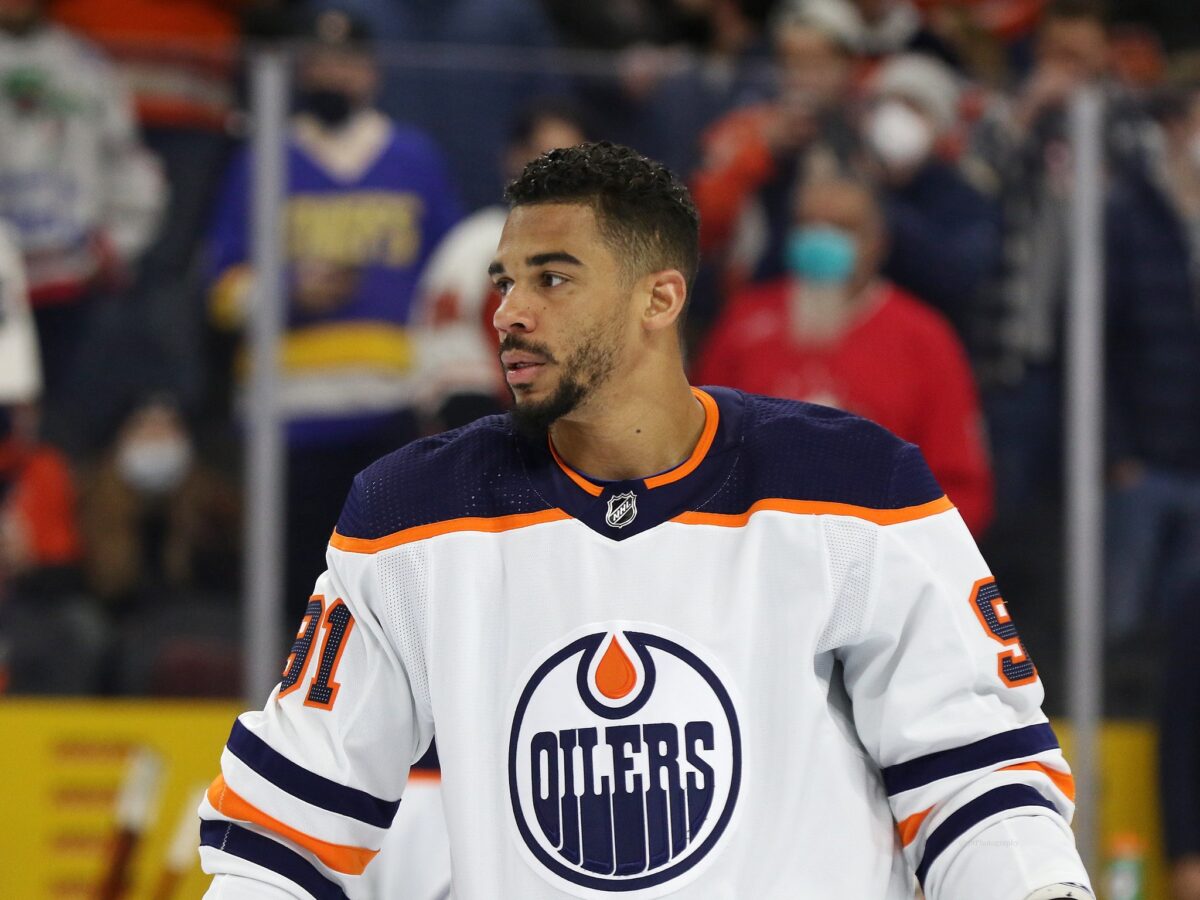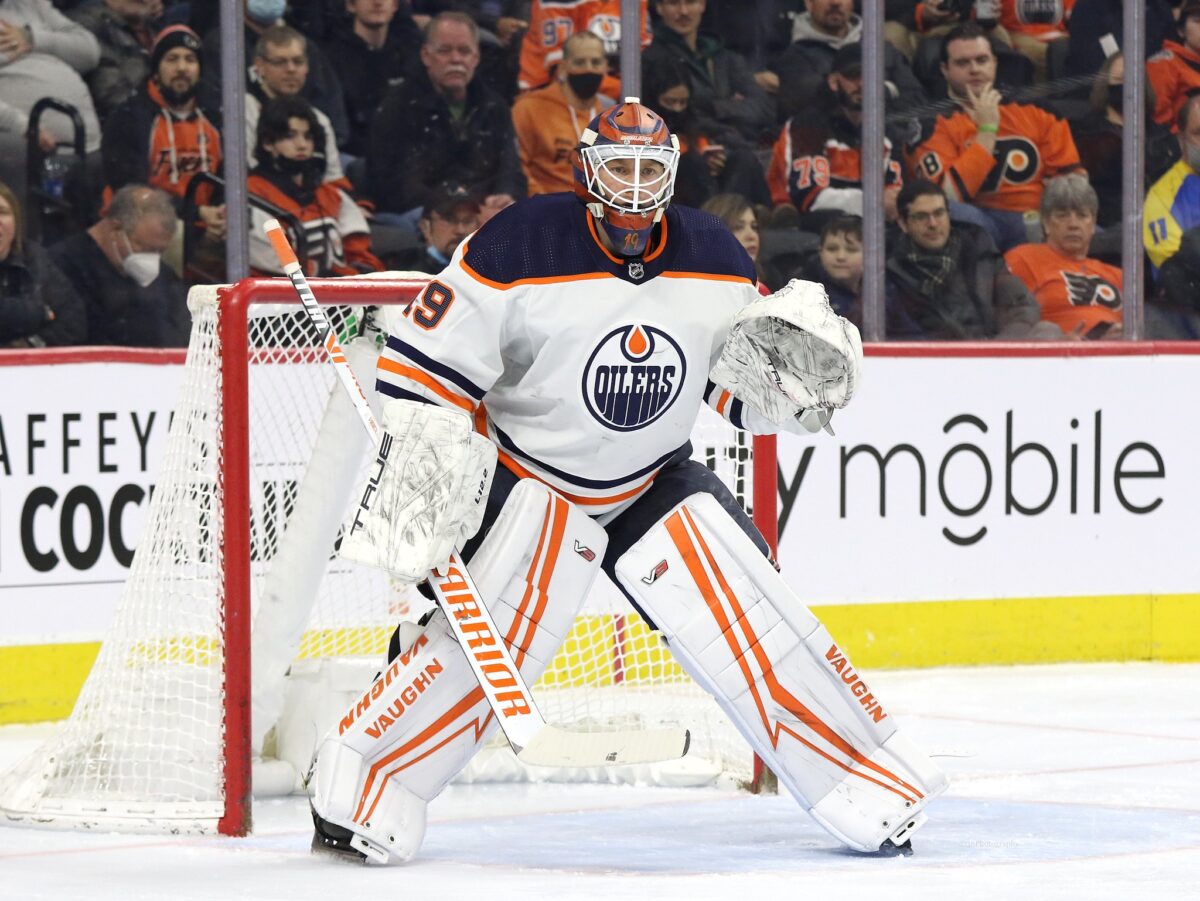The Edmonton Oilers have three young players they drafted and developed that should be in the plans for the future and one recent signee that has exceeded expectations since joining the team. The big question is how will they be able to bring back Evander Kane, the only unrestricted free agent, and also sign restricted free agents Jesse Puljujarvi, Kailer Yamamoto, and Ryan McLeod.
The Oilers are going to have a busy offseason to be able to make the money work to sign all four of these players, plus fill out the rest of their team. They are fortunate to have some money coming off the books, but they’ll have to do some work to free up more and decide what lengths these contracts will be.
What Each Player Brings to the Team and Why They Should All Return
Jesse Puljujarvi and Kailer Yamamoto
Puljujarvi and Yamamoto are both signed to the exact same deal that sees them getting paid $1.175 million this season, though Puljujarvi signed his one year prior. Both have played well above what they signed for and are due for raises on their next contract, as they have also both established themselves as top-six wingers with the ability to shift to the third line to make the team deeper.
Both have spent time and found chemistry at times with Connor McDavid and Leon Draisaitl. But right now, Yamamoto has really found his stride on the top line with career highs in goals (17) and points (30) as well as goals in six of the past seven games while also adding four assists over that span. He is playing the best hockey of his career, even more so than when he first found his place on the Oilers in a full-time role in 2019-20 beside Draisaitl and Ryan Nugent-Hopkins.

It only took another year and a half to find that game again, and just in time for a meaningful playoff run and a new contract. Yamamoto would be an option to sign a bridge deal that lasts no longer than four years to see if this production can continue or if it’s just another flash in the pan stretch before he falls off for another long period of time. A fair number would be between the $3-4 million range for that time. Then at age 26 or 27, he can sign his big ticket.
Puljujarvi would be the player I and many others would consider locking up long-term. Taking a look around the league, former third overall pick Jesperi Kotkaniemi just signed an eight-year extension at $4.82 million average annual value (AAV). Both were picked high, and both have taken a bit of time to develop properly at the NHL level. This would be a fair number and term for Puljujarvi, and the Oilers would be getting an under-the-radar great player from an analytics standpoint. Joel Eriksson Ek’s eight-year, $5.25 million AAV also looks like a similar scenario like the one the Oilers are in with Puljujarvi, except you have to think in comparison, Puljujarvi commands less money.
Kind of the opposite to Kane, Puljujarvi needs to improve on finishing, but he is a strong two-way player. He ranks third among forwards on the Oilers in even-strength goals for/60 minutes and ranks first with the same criteria in power-play goals for/60. He impacts the team’s offence in more ways than just scoring. He forechecks well with his long reach, wins puck battles, creates space, and screens the goalies not only at even strength but also on the power play.
Ryan McLeod
McLeod can be best described as someone who can do everything and fill in everywhere. His offence is still getting there, but he has been utilized throughout the lineup all year and in every situation. He is the only player that will be coming off his entry-level contract.
McLeod still has lots of room to grow, as he is just in his rookie season. He’s played on every line this year at centre and wing, manning the second power-play unit and spending time on the penalty kill. His speed is one of his best assets, and he’s able to carry the puck up the ice and into the zone with ease. The best-case scenario for both parties is to sign him to a bridge deal for two to three years and see what kind of player he becomes. With all the young talent coming through the organization, you’d hate to commit to a player long-term for a big price and have it not pay off. Then they are back to square one by being in cap trouble.
Evander Kane
Kane signed a cheap mid-season deal with the Oilers after the San Jose Sharks terminated his contract. The uncertainty of what he brings to a team with his off-ice antics was in question and forced him to take a big discount to return to playing this year for a competitor. The Oilers took a chance, and it has paid off immensely. But seeing how he has fit in and what he brings to the team, his deal will also see his next deal be more money and for longer.
There seem to be absolutely no problems with Kane and the Oilers. He is fitting in great and has real chemistry with McDavid and Draisaitl. His ability to play with either really helps when there are injuries, or the lineup needs a shake-up to get going.

Kane brings a physical presence to the top-six while also playing at a high level on the offensive side of things. He isn’t afraid to go to the dirty areas and be the first man into every scuffle. Most of his production has come at even strength, and he continuously shows that he can get himself to the right places to finish. This has been a problem for wingers on the Oilers in the past, the lack of finish. He is a legitimate scorer, and he still seems to be in his prime years. The team needs to take advantage of the success he’s had in Edmonton and sway him with the prospect of winning and continuing to play with the top players in the world.
I would be wary of going long-term with Kane, as he is now 30, but three years max at an AAV around Zach Hyman’s or Nugent-Hopkins seems fair if he can be a consistent 30-goal scorer and play physically. The less term gives the Oilers a good window to compete for a Stanley Cup, and it will end when these bridge deals are ending, creating the room so that the Oilers can lock up the players entering the prime of their careers to seven to eight-year deals worth even more if they’ve earned it.
Money the Oilers Will Have to Move Around
Now to how the Oilers are going to get the money to sign these players.
The big topic is how the Oilers are going to move out three players in particular — Tyson Barrie ($4.5 million), Zack Kassian ($3.2 million), and Mike Smith ($2.2 million). Together they take up $9.9 million in cap space and all play in replaceable roles. Barrie is on the third pairing, and Evan Bouchard or even Darnell Nurse can play on the power play in the spot he’s supposed to excel at. Kassian is a fourth-line player, and on a healthy Oilers team, he could even find himself in and out of the lineup. Smith is a backup at best at age 40, and his play has dropped off significantly in addition to being an injury concern.
The best option for those three players is to trade them. Barrie won’t require a sweetener, though Kassian may due to his cap hit. Smith surely will, but his contract is the cheapest and shortest, so it could be less costly than anticipated.
Now for the contracts ending and new deals starting. Nurse is the big one, as his new deal that pays him $3.65 million more annually starts. Many say this is a horrible deal, but where on the open market are you going to find a player like him if he walks. An organization like Edmonton is sometimes tougher to bring in players, as is a place like Columbus, where they had to pay their top defenceman Zach Werenski $9.583 million per season.
Expiring deals are Mikko Koskinen ($4.5 million), Kyle Turris ($1.65 million), Josh Archibald ($1.5 million), Kris Russell ($1.25 million), Brett Kulak ($925k), and Derick Brassard ($412k). The only possibilities here in players the Oilers would even think about bringing back are Koskinen, Kulak, and Brassard. Brassard would get $1 million or less, Kulak maybe around $2 million, and Koskinen for $2.5 million at the most in a backup role.

The most cost-effective solution would be to utilize players on entry-level deals or cheap signings. This means introducing players like Stuart Skinner to the NHL full-time as a backup ($750k), Philip Broberg ($863k), Markus Niemelainen ($762k), Dylan Holloway ($925), and Seth Griffith ($762k).
The last of the moves they can make has to do with buyouts. Duncan Keith makes way too much money to be a fourth defenceman at best, so I would consider buying out his contract. According to CapFriendly, buying out Keith’s contract would allow the Oilers to only pay 2/3 of his salary at age 38, resulting in $3.71 million over a two-year span instead of $5.538 next season. Since there’s probably no way he will waive his no-move clause, this would be the only option to free up some space. Re-signing Kulak or having Broberg and Niemelainen step up could replace that hole in the lineup. Keep in mind another $2.25 million comes off the books after next season since the money retention of Milan Lucic and the buyout penalty of Andrej Sekera ends.
How the Money & Term Works
To recap what was said above, Puljujarvi should receive an extension for the max number of years at an AAV of $5 million or less. Yamamoto and McLeod should get bridge deals until the Oilers know exactly what they have in them. This will allow them to control their own future and give the Oilers time to have skilled young players on good deals.
Related: Oilers: 3 Roster Management Mistakes Made in 2021-22
As for Kane, his PDO, which is generally referred to as luck, is 105, which is much higher than the average and should revert back to the mean at some point. This doesn’t mean players can’t create their own luck with chemistry and great play. The window to win a Cup while McDavid and Draisaitl are under contract is now, and they should take advantage of a short-term deal also worth around $5 million for Kane if possible.
Adding up the expected cost to have all these players under contract for next year would equal around $15-16 million for the next few years, and the ideal money off the books by the moves mentioned above is about $18.5 million. They can realistically make it work, but it will probably cost them a draft pick or two and a good amount of shuffling around on the back end.
Let me know in the comments whether you agree with the Oilers bringing back all four of these players, the AAV, and length.